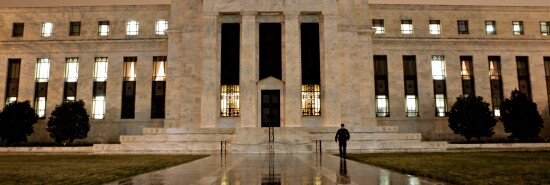
Yes, taxpayers fund the Fed’s losses
Tiana Lowe
Video Embed
Apparently unable to predict the very inflation that it directly caused, the Federal Reserve is now seeing monthly losses of $7 billion to $8 billion. Contrary to assertions of Congress and investors keen for the Fed to bail out its own shoddy decision-making, taxpayers are indeed on the hook for the Fed’s losses.
Let us start with why the Fed is losing money. Paul H. Kupiec and Alex J. Pollock over at the Wall Street Journal explain in detail, but in short, the Fed purchased Treasurys and mortgage-backed securities — trillions of dollars’ worth, in fact — back when they inexplicably held interest rates near zero, despite persistent economic growth. The purchase of these bonds put more money into the economy. They now pay the Fed a low interest rate, meaning they are comparatively worth less than new Treasurys that pay higher rates.
SVB COLLAPSE: SENATE REPUBLICANS DEMAND ANSWERS FROM FEDERAL RESERVE
The Fed’s failure to see its own rate hike campaign coming will be expensive. Andrew Levin, a Fed alum now at Dartmouth, tells Marketplace he predicts interest rate risk exposure will cost “close to a trillion” over the decade.
But more importantly, whom will it cost? Federal taxpayers, of course.
The Fed is self-sustaining only in theory. In practice, the Fed milks money from the taxpayers in two crucial ways. First, it explicitly creates money by buying government bonds, allowing it to deposit greater reserves into banks, which fuels the second cause of inflation. By devaluing existing dollars, inflation robs the value of savings and reduces the burden of debt.
The Fed, a nonprofit institution, usually siphons profits back to the Treasury to allow the government to pay down debts. But a Mercatus study found that in order to absorb the costs of its refusal to hedge against interest rates, the Fed will give the Treasury $800 billion less in remittances than it would have absent the pandemic glut of quantitative easing from March 2020 to March 2022. Thanks to this remittance buffer, the Fed doesn’t have to post losses as other financial institutions would. Taxpayers won’t have to issue a direct bailout.
Still, the taxpayers have already paid. While QE theoretically benefits taxpayers when the Fed both minimizes the interest rate owed on debt and passes remittances back to the Treasury, that’s not happening here. Instead, the Fed is losing money on its existing investments and now acquiring further losing securities from failures such as the Silicon Valley Bank. Taxpayers already financed the Fed through seigniorage, and now the Treasury is losing all the benefit.
